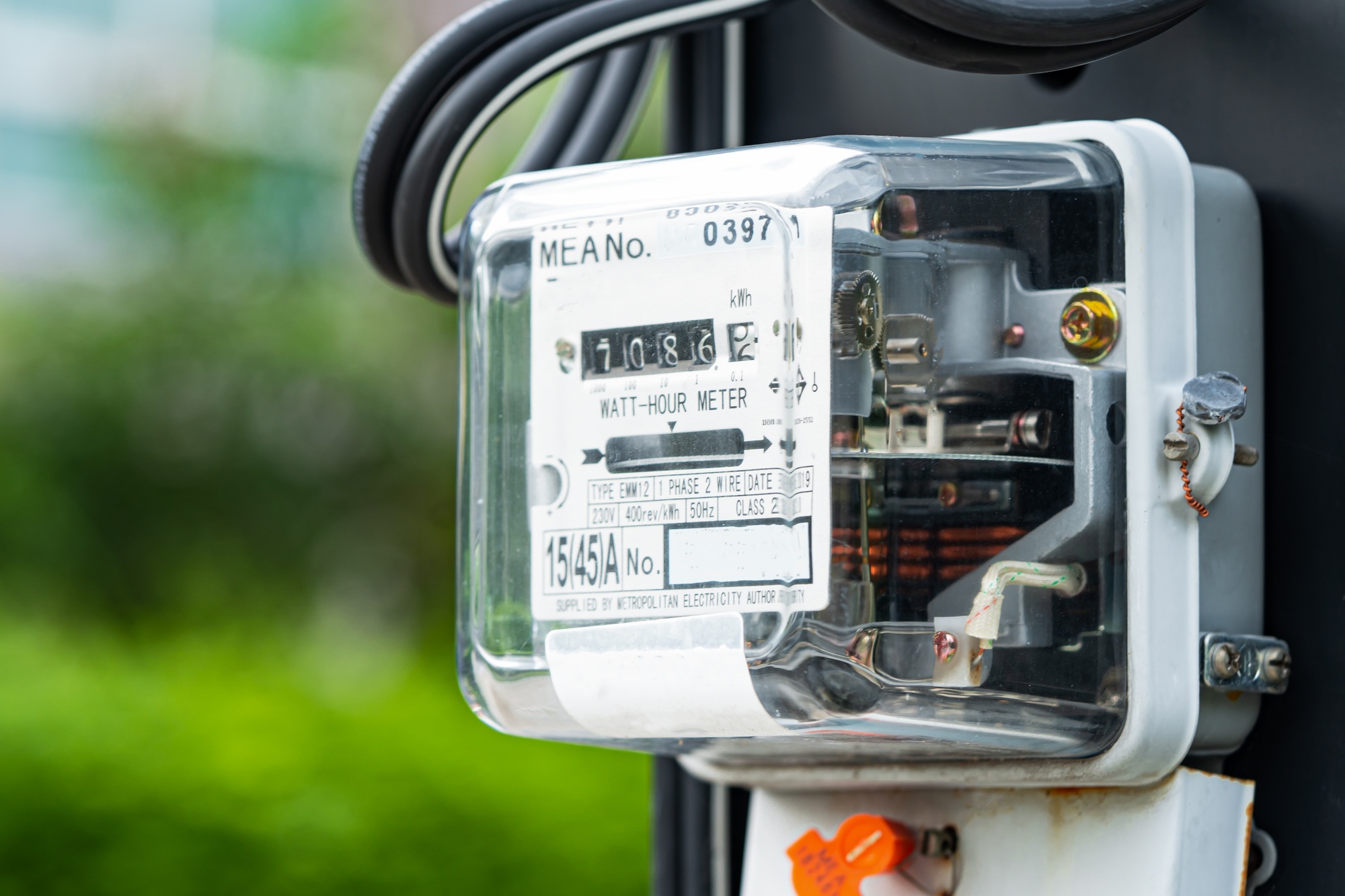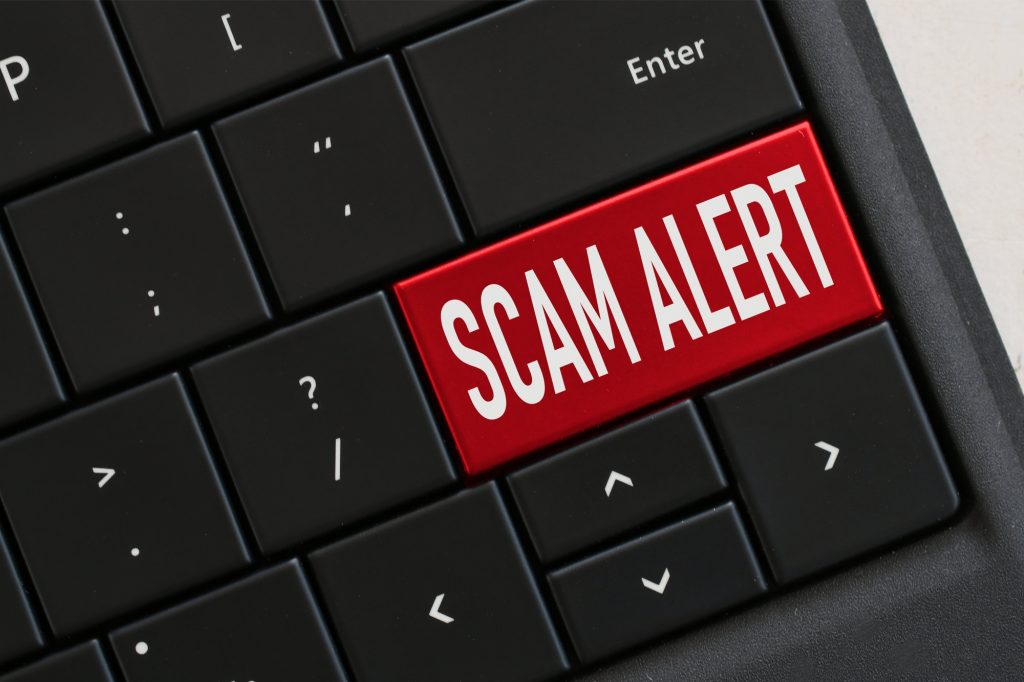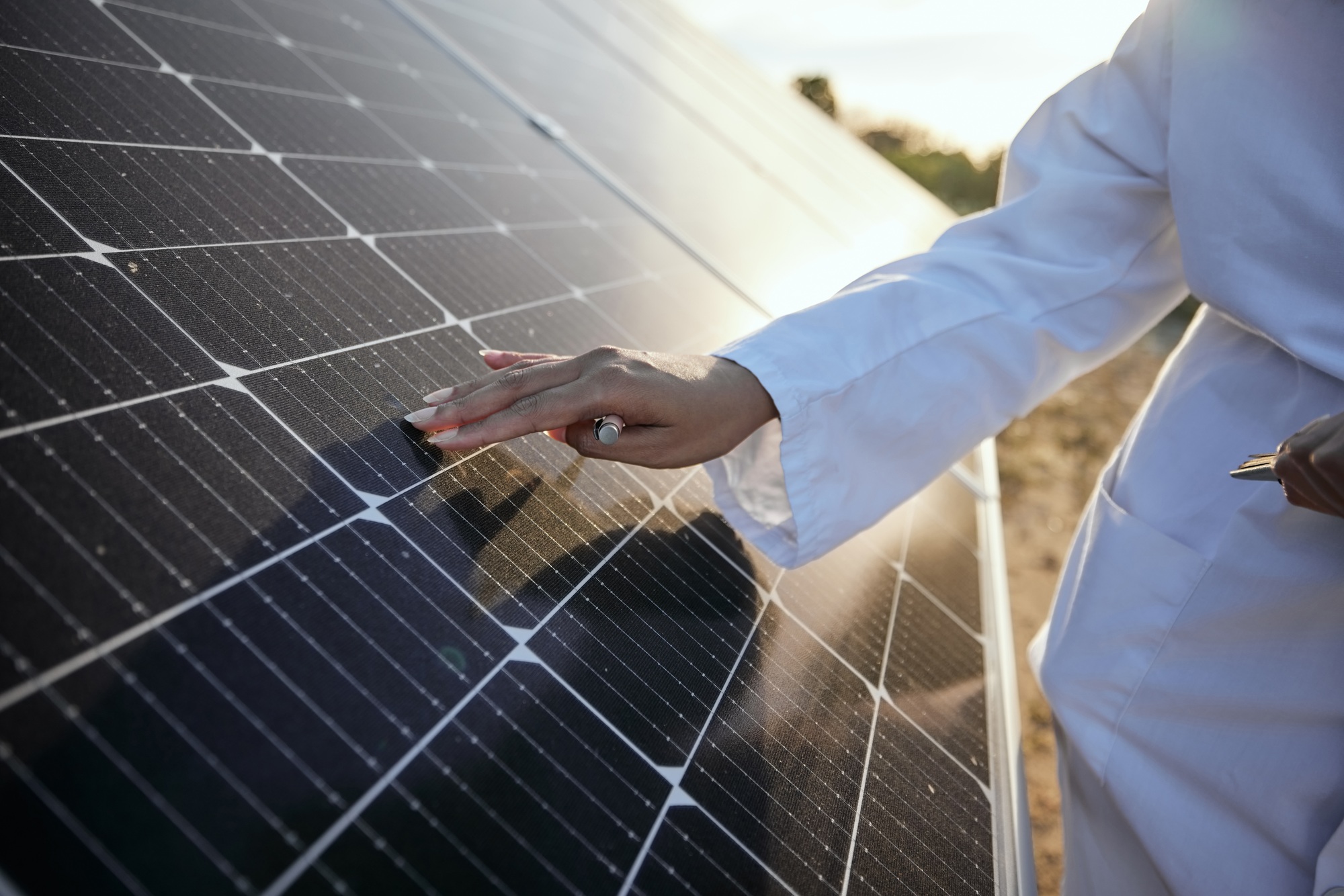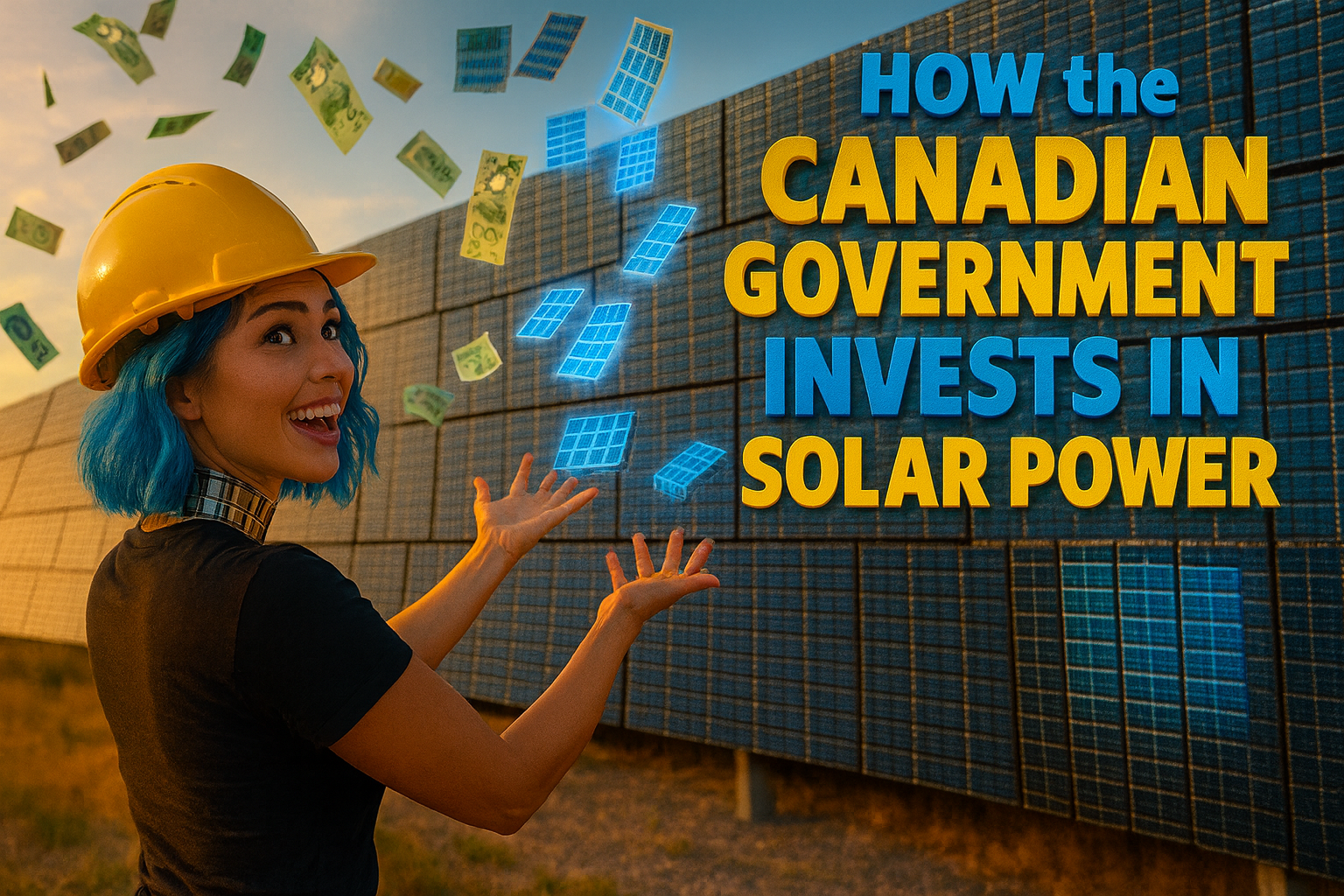Best Solar Panels in Canada for Residential Use in 2025
January 22, 2025
Can You Sell Solar Energy Back to the Power Company in Canada? Net Metering
March 4, 2025As solar power gains popularity across Canada, homeowners are increasingly interested in installing solar panels to save on electricity bills and help the environment. But along with the rising interest comes a surge of solar industry scams and misleading sales tactics targeting unsuspecting consumers. This article will cut through the noise with a no-nonsense look at common solar scams in Canada, the real costs of going solar, pitfalls of solar lease agreements, tips for choosing the right installer, and a primer on understanding government incentives. Our goal is to arm you with practical knowledge so you can avoid being scammed and ensure you get the best deal when deciding to go solar.
Solar Panel Scams in Canada in 2025
Solar Industry Scams in Canada
Not every solar deal is as good as it sounds. Unfortunately, solar panel scams have been reported across Canada, often targeting homeowners who are eager to save money. It’s important to know the red flags and tactics scammers use. Here are some common ways bad actors try to rip off consumers:
- High-Pressure Sales Tactics: A scammer might come to your door or call you with an urgent offer, insisting you must sign up right now to get an exclusive deal. They may claim there’s a limited-time promotion or say “this deal is only good today.” Reputable companies don’t force you into quick decisions. If a salesperson is overly pushy, won’t take no for an answer, or pressures you to act immediately, that’s a big red flagenergy rates. Scammers rely on rushing you before you have time to research.
- “Free Solar Panels” Pitches: Beware of anyone offering to install solar panels for free or at an unbelievably low cost. Often, this is a bait-and-switch. The pitch might be that government programs or the company will cover the cost, so you pay nothing. In reality, there’s usually a catch – like signing a long-term contract or loan. The Better Business Bureau (BBB) warns that con artists use misleading “free solar” offers to trick people. They may claim the deal is only for today and ask for your personal info or an upfront fee that will supposedly be reimbursed by a government program (which doesn’t actually exist). If someone says solar is free, remember the old saying: if it sounds too good to be true, it probably is.
- Misrepresenting Government Incentives: Another scam involves a salesperson pretending to be from a government or utility program. They might say you’ve qualified for a special rebate or that a new government program will pay all or most of your solar installation cost. In one reported case, a door-to-door rep promised a homeowner a 26% rebate for a new roof plus solar – a real rebate program did exist, but the salesperson misrepresented its details to make the sale. Scammers sometimes reference legitimate incentive names to sound credible, but then twist the facts. Always double-check any incentive claims through official government websites (more on real incentives later).
- Phantom Installations (Taking Money and Disappearing): Perhaps the worst scam is when a fake “installer” takes your deposit or personal financing information and never delivers the product. Victims have reported scenarios where a company begins installing panels and then vanishes before finishing, or installs defective equipment and ghosts the customer afterward. In Canada, there have been incidents of companies taking large deposits from multiple homeowners and not completing the work. For example, one Alberta-based solar company took $3,500 deposits from numerous customers and months later still hadn’t installed the panels or returned calls. The homeowners were left empty-handed, and the company in question racked up so many complaints that the BBB gave it an “F” rating. To protect yourself, never pay the full amount upfront for a solar system. A reasonable deposit is common, but be wary if a company demands most of the payment before any work is done.

How to Spot a Solar Scam – Red Flags:
- The salesperson claims to be with the government or utility but pushes you to sign a contract on the spot. (Real programs don’t usually send aggressive door-to-door solicitors.)
- You’re offered an unrealistically low price or told “it’s basically free” thanks to subsidies, but asked to pay money or provide bank details first.
- The company avoids giving you written information, detailed quotes, or time to read the contract. They might say “just trust us, sign here.”
- They use scare tactics, like “energy prices are about to skyrocket, you must go solar now or you’ll miss out.”
- The offer comes unsolicited (a random call or knock at the door) and the rep becomes irritated or evasive when you ask questions or for credentials.
If you encounter any of these, pause and do your research before committing. A legitimate solar provider will welcome your questions and let you take your time to decide. In the next sections, we’ll dive into the real costs of solar (so you know what’s realistic), explain tricky lease agreements, and give tips on vetting installers and understanding incentives. All of this knowledge will help you confidently separate a great solar opportunity from a scam.
The Real Costs of Going Solar
Installing solar panels is a significant investment – one that pays back over years, not days. Understanding the real costs and expected savings is crucial to making an informed decision (and spotting when a salesperson’s claims don’t add up).
Upfront Installation Costs: Solar isn’t cheap to install. As of recent data, the average cost for home solar in Canada is roughly $3 per watt. That means for a typical 7 kW (7,000 watt) system, you could be looking at around $21,000. National surveys put the average around $3.34/W, or about $25,000 for a 7.5 kW system
Many installers quote in a range of $2.50 to $3.50 per watt, depending on the equipment and region
So if you need, say, a 5 kW system to cover a good portion of your usage, expect roughly $12,500–$17,500 out of pocket (before any rebates or credits). Bigger homes needing 10 kW might see quotes in the $25,000–$35,000 range.
These costs typically include everything: the solar panels themselves, inverters (which convert solar power to usable AC electricity), mounting hardware, permits, and labor for installation
If a company quotes a price dramatically lower than this range without a clear explanation, be skeptical – they might be leaving something out or planning to hit you with hidden costs later. Conversely, extremely high quotes well above $3.50/W should prompt you to get competing bids to ensure you’re not being overcharged.
Factors Affecting Cost: Every home is different, and several factors influence how much your solar project will cost and how well it will perform:
- Energy Consumption: How much electricity do you use? A household with higher usage will need a larger system (more panels) to offset a big chunk of the bill, increasing cost. If your monthly power bill is modest (say under $100), a full solar array might not be cost-effective.
- System Size & Equipment: The more panels (or higher capacity) you need, the higher the cost. Higher-efficiency panels or premium brand components can also cost more per watt, but might produce more power in limited space. Adding a battery backup will significantly increase costs (though it can provide backup power).
- Roof Size, Angle & Sunlight:* Solar works best on a large, unshaded south-facing roof. If your roof is small, oddly shaped, heavily shaded by trees, or not south-facing, your system may produce less energy and take longer to pay off. Some homes are not well-suited to solar at all – a reputable installer should tell you this upfront if that’s the case. Scammers, on the other hand, might gloss over these details and promise great performance even on a poor site.
- Location (Province/Utility): The province or city you’re in affects both the cost and the value of solar. Installation prices might be a bit higher or lower than the national average depending on local labor rates and market competition. More importantly, electricity rates and solar policies differ: if you live somewhere with high electricity prices (e.g. Ontario or Nova Scotia) or limited access to cheap grid power, the savings from solar are greater. In provinces with very low electricity rates (e.g. Quebec with cheap hydro power), solar has a longer financial payback. Sunlight also varies – for instance, parts of the Prairies get lots of sun, while the West Coast can be cloudier. A good installer will estimate your production based on local sun data.
Realistic Payback and Savings: Solar is a long-term investment. Depending on the factors above, a typical payback period (time to recoup your investment through savings) might be around 8 to 15 years in Canada, after which the electricity it generates is essentially free. If a salesperson tells you that you’ll “make money” or fully pay off the system in just 2-3 years, be wary – that’s generally not feasible without extraordinary circumstances. For example, one Alberta homeowner interested in solar acknowledged “it would be a while before we’d make up any initial costs”, even though they expected to save money on monthly bills in the long run.
This is a realistic outlook. Solar will shave down your monthly electricity charges (sometimes even hitting zero in sunny months), but you must still cover the upfront cost of the equipment. Over decades, those savings can exceed the cost, and panels often last 25+ years. Just don’t expect an immediate windfall.
Bottom Line: Knowing the real costs helps you spot lies. If someone claims “the government will pay for your solar” or “this 5 kW system will only cost you $5,000”, a big alarm should go off. Ask for a detailed, itemized quote to see where the costs come from. A trustworthy solar provider will gladly explain the price, the expected output, and the projected savings/year. They should also be honest if your home isn’t ideal for solar. Having a grasp of typical pricing and payback empowers you to push back on any outrageous claims.
Solar Lease Agreement Pitfalls
One common offer you might hear is “no money down solar” or leasing solar panels instead of buying them. It can sound enticing – you get solar on your roof without the big upfront cost, and you just pay a monthly fee or buy the power it produces. This setup is usually either a solar lease (you pay a fixed monthly rent for the panels) or a Power Purchase Agreement (PPA) (you pay for the electricity at a set rate). These are forms of third-party ownership: a company owns the panels on your home, and you pay them for the privilege of using those panels’ power.
While leases or PPAs can be legitimate in some cases, they often come with pitfalls that many homeowners overlook. Scammers may also push leases by pitching them as “free solar” – when in fact you’ll be paying in other ways
Here are key pitfalls of solar leases/PPAs to be aware of:
- Long-Term Contracts: Solar leases typically last 20 to 25 years. Once you sign, you’re locked in for decades unless you pay hefty penalties. If you don’t like the service or something changes, too bad – you’re stuck unless you manage to buy out the contract. Always read the fine print to see how long you’re committing and what options (if any) you have to exit the agreement early.
- Total Cost Can Be Higher: Leases often have escalation clauses – for example, the monthly lease payment might increase by a few percent each year, or the PPA rate for power might go up annually. Over 20 years, those increases add up. You might end up paying more in total than if you had purchased the system upfront or with a loan. In fact, you usually save less with a lease/PPA than if you buy your system outright, especially if there are incentives you could claim by owning the system. The leasing company keeps the ownership benefits (like government rebates or renewable energy credits) and you get whatever bill savings are left over.
- No Added Home Value: Owning solar panels can increase your property value (because the home comes with a built-in source of free electricity). But with leased panels, you don’t own the system, so they typically don’t boost your home’s value. In some cases, they can even make selling your home harder (more on that next). Prospective buyers might view a leased system as a complication.
- Selling Your Home Is Complicated: If you decide to sell your house before the lease is up, you face a dilemma. Either the buyer must agree to assume your solar lease (not all buyers will be keen to take over payments for equipment they didn’t choose), or you have to buy out the remainder of the lease contract to remove the panels. Many home sellers have found that leases narrow the pool of potential buyers or require discounting the home price to compensate. As one solar provider notes bluntly, leased solar panels “do not add any value to your home” and can be an obstacle during sales negotiations. In Canada, there have been reports of homeowners regretting 20-year solar lease deals for exactly this reason. You might end up paying thousands to break a lease so you can sell your property.
- Maintenance and Performance Issues: In theory, one selling point of a lease is that the company is responsible for maintenance of the panels. But what if the system underperforms? You might be stuck paying the lease even if the panels aren’t producing the promised amount of energy. And if the company providing the lease goes out of business (it’s happened in the past with some solar firms), you could be left with panels on your roof and confusion over who will service them or honor the contract. Always check what the lease says about maintenance, repairs, and guarantees of performance. Don’t take a salesperson’s word for it – get it in writing.
How to Protect Yourself: Lease agreements are complex and legally binding, so tread carefully. If you are considering a solar lease/PPA, do the math yourself: Compare the estimated 20-year total payments to the cost of buying a system (minus incentives you’d get). Often you’ll find the lease is much more expensive overall. Read every clause of the contract – especially about payment increases, what happens if you move, and end-of-term options (do you get to buy the system for a residual amount? Have them remove it?). Dishonest companies may gloss over these details and make big promises, only to hide behind the fine print later.
If you don’t understand the contract, consult a financial advisor or lawyer.
Also, consider alternatives: Many banks and programs now offer low-interest or even interest-free loans for solar (as we’ll discuss in incentives), which let you own the system and keep the financial benefits. In short, leasing might make sense for a few folks, but be sure you understand all the implications. Never sign a lease on the spot at the door – always take time to review it. Scammers often push leases because they can be confusing, so an overwhelmed customer might miss the downsides until it’s too late.
Choosing the Right Installer
Selecting a reputable solar installer is probably the most important step in your solar journey. A trustworthy, qualified installer will not only do quality work, but also guide you through the process honestly – without shady gimmicks. In contrast, choosing the wrong installer can lead to cost overruns, poor performance, or outright fraud. Here’s how to find the right company and avoid the bad apples:
1. Do Your Homework – Research and Compare: Don’t go with the first solar company that contacts you. It’s recommended to get multiple quotes from different installers in your area bbb.org. This helps you compare prices, system designs, and approaches. If one quote is wildly different (especially much lower) than others, ask why. Sometimes scammers lure customers with an unrealistically low bid that omits things or assumes incentives you might not actually get. By getting three or more quotes, you can spot outliers and get a sense of the fair market price. Research each company: look up their name online, read reviews, and check how long they’ve been in business. A quick search may reveal if they have a pattern of complaints. For instance, in the earlier example of the Alberta company, the neighbors later said “I wish we had done a little more checking initially” after finding many negative reviews and an F rating on the BBB for that installer.
That kind of information is often available before you sign a contract, if you take the time to look.
2. Verify Licensing, Credentials and Experience: Solar installation involves electrical work and structural mounting – so at minimum, your installer should be a licensed electrical contractor in your province and have any other required certifications. Ask if they have certified electricians on staff and what training they have in solar specifically. Some installers might have additional certifications (for example, some North American installers are certified by NABCEP – a solar industry credential – though this is more common in the US). Membership in industry associations (like the Canadian Renewable Energy Association) can also indicate professionalism. Ask how many systems they’ve installed and if they have experience with your local city’s permitting and utility interconnection process. An experienced installer will also do a thorough on-site assessment (or at least a remote evaluation via software) to design a system for your home – be cautious if someone offers a one-size-fits-all solution without looking at your specific roof or electricity usage.
3. Check References and Reputation: A reliable installer will have happy customers. Don’t hesitate to ask for references – get a couple of phone numbers or emails of past clients and see what their experience was. You can also check the company’s BBB profile for complaints or ratings, and see if they are accredited. Look at online review platforms (keeping in mind that no company is perfect, but a pattern of similar complaints is a bad sign). If an installer has a lot of unresolved complaints about not delivering on promises or shoddy work, steer clear. On the flip side, an installer with many positive reviews over several years is a good sign. The BBB recommends investigating each company’s reputation and talking to previous customers about their experience.
Legitimate businesses will not shy away from providing references.
4. Be Wary of Door-to-Door Sales: In Canada, door-to-door salespeople have earned a bad reputation in the solar sector. Not every door-knocker is a scammer, but many scams start with an unsolicited knock on the door. Some provinces (Ontario, Alberta) have even made certain energy product door-to-door sales illegal, though currently those laws don’t cover solar sales. If someone comes to your door selling solar, don’t feel obligated to decide on the spot. You have rights: consumer protection laws in every province give you a cooling-off period (usually 10 days) for contracts signed at your door, during which you can cancel for any reason. So even if you did sign something under pressure, you can change your mind within those 10 days. It’s often smarter, however, to not sign anything immediately and instead use that contact as one potential quote among others you’ll gather. A reputable door-to-door rep will understand if you want time to think and compare – if they insist you sign right now, show them the door.
5. Scrutinize the Contract and Warranty: Before committing to an installer, ask to see the contract terms and warranty information in advance. A proper contract should spell out the equipment to be installed (make and model of panels, inverter, etc.), the timeline, the total cost and payment schedule, and responsibilities (permits, inspections, etc.). Watch out if any important details are missing – for example, a quote should list the number of panels and the expected system output. If such data isn’t provided, that’s a red flag. Also, clarify warranties: good solar panels come with 20-25 year performance warranties, inverters often ~10 years, and reputable installers will offer a workmanship guarantee (e.g. 5-10 years for any roof leaks or installation issues). If an installer offers no clear warranty or just points to the manufacturer’s warranty without standing behind their work, be cautious. Make sure you understand who to contact if something breaks.
6. Communication and Answers to Questions: Pay attention to how the installer communicates. Do they answer your questions clearly and patiently? You should ask plenty of questions – about how the system will work, how much it will produce, what maintenance is needed, how net metering works in your area, etc. A quality installer will be happy to explain. If a company gets annoyed or gives vague answers (or worse, contradicts themselves), consider it a red flag. You’re making a big investment, and you deserve straight answers. Scammers or just poor contractors often rely on the customer’s lack of knowledge; a good installer educates their customer.
In summary, choosing the right installer comes down to research and trust. Take your time to vet the company. It’s perfectly fine to say, “I need to review this and will get back to you.” The installers who truly want your business will respect that. Remember, solar is a long-term relationship – those panels will be on your roof for decades. Make sure you’re comfortable with the people putting them there and that they’ll be around to support you in the future.
Understanding Incentives and Rebates
Solar can be more affordable thanks to various government incentives – but it’s crucial to know what these incentives really are (and aren’t). Scammers often twist incentive programs to make their pitch sound irresistible, so having a clear understanding helps you spot lies. Here we break down the key solar incentives in Canada and how they work in reality:
1. Federal Programs: The federal government has supported home solar through a couple of major initiatives:
- Canada Greener Homes Grant (now closed to new applicants): This grant, launched in 2021, offered homeowners $1,000 per kW of solar installed (up to $5,000 in most of Canada, and up to $10,000 in Ontario) as a rebate. It was a popular program that many solar sales reps touted. However, as of mid-February 2024, the Greener Homes Grant stopped accepting new applications. If you already got approved before that cutoff, you can still receive your rebate after installing. But if someone now promises you “free solar” because of a federal grant, they’re likely referencing a program that no longer takes new applications. This is a classic example of why you should verify incentive claims. Always check the official Natural Resources Canada (NRCan) website or provincial partners to see current status. The Greener Homes Grant’s closure hasn’t been widely advertised to the general public, so a shady seller might still use its existence in their pitch hoping you won’t know it’s closed.
- Canada Greener Homes Loan: The good news is that while the grant program is closed (at least for now), there is still the Greener Homes Loan, which is an interest-free loan up to $40,000 for energy-efficient upgrades, including solar panels. This is not “free money” – you have to pay it back – but because it’s a zero-interest loan over 10 years, it can significantly help with cash flow. Essentially, you could finance your solar installation with this loan and repay it over time without interest charges. To get it, you must go through the process of an energy audit and apply via the federal portal (and of course you need to qualify credit-wise). Be wary of any solar salesperson who says “we’ll handle the loan paperwork for you, just sign here”. You should go through the official application yourself or with a reputable contractor’s guidance – don’t sign any loan documents that you haven’t reviewed fully. The loan can make solar more accessible, but remember you’ll have a monthly payment. A legit installer will help you estimate if your energy savings can roughly offset that payment.
- Tax Incentives (Commercial only): For businesses and commercial projects, Canada has introduced an Investment Tax Credit (ITC) up to 30% for clean energy technologies (including solar) starting in 2023. However, this doesn’t apply to personal residential solar. If you’re a homeowner, beware of any claim that you can get a tax credit on your income taxes for installing solar – that’s true in the US, but not for typical Canadian homeowners. (The ITC here is for businesses or possibly rental properties under certain conditions.) Personal residences benefit through grants or rebates instead, not tax credits.
2. Provincial and Local Incentives: In addition to federal support, various provinces and even municipalities offer solar incentives. These change over time, so it’s important to get up-to-date info from official sources like provincial energy agencies or utility websites. Here are some notable examples (as of early 2025):
- British Columbia: Through the CleanBC program, BC Hydro (the main electric utility) now offers a rebate for solar installations. Homeowners with BC Hydro accounts can get $1,000 per kW of solar installed, up to $5,000 off, as well as additional rebates for adding battery storage. So a 5 kW system could qualify for the full $5,000 rebate. This is a new incentive aimed at encouraging more home solar in BC. If you’re in BC, check if you’re eligible (note: customers of municipal utilities like FortisBC or others in BC might not be eligible for the BC Hydro program). This rebate effectively replaced the federal grant in BC for many people.
- Nova Scotia: NS has been a leader in solar incentives with the SolarHomes program. Homeowners can get $0.30 per watt, up to 25% of the project cost or $3,000 max as a rebate. In practice, most people hit the $3,000 cap (which might cover roughly 15-20% of an average system). Nova Scotia also has various financing programs (like Halifax’s Solar City program, which provides loans paid through property tax). Always apply for pre-approval with Efficiency Nova Scotia before installing to ensure you get the rebate.
- Prince Edward Island: PEI’s provincial government offers one of the most generous rebates – $1,000 per kW up to 40% of costs, capped at $10,000 for home systems. That means a 10 kW system could get the full $10k rebate (covering a big chunk of the cost). This has made PEI a hot market for solar. (Note: As of early 2025, PEI was reviewing their program, so ensure it’s active when you plan your project.)
- Alberta: After a popular rebate program a few years ago (which has since ended), Alberta currently doesn’t have a province-wide residential rebate. However, some cities stepped in with their own incentives. For example, the town of Banff offers $0.75/Watt up to 20 kW (so max $15,000) for local installations, and the city of Edmonton had a program (now expired). Alberta also has a unique setup where excess solar generation can be sold under certain contracts (though primarily for larger systems). The key point: check your municipality or local government – some have green energy incentive programs even if the province doesn’t.
- Ontario: Ontario currently does not have direct rebates for new solar installations (after the end of the MicroFIT program and a recent Home Efficiency Rebate that doesn’t cover solar). However, Ontario does emphasize Net Metering (explained below) as the way to benefit from solar, and some utility regions or the provincial Save On Energy program provide resources. Be cautious of any installer in Ontario claiming there’s a new rebate – always verify. As of 2025, the main help in Ontario is the federal loan and possibly the ability to net meter and offset your bill.
- Other Provinces: Many provinces offer Net Metering credits (see next item) as a standard policy, and a few have minor incentives or loan programs. For instance, Saskatchewan had a rebate program which was replaced by a bid-based program for larger producers (not really for typical homeowners), but they do allow accelerated depreciation for businesses and have net metering. Manitoba and Quebec do not offer rebates, but have net metering and some financing options. Always check with your province’s energy department or electricity provider for the latest info.
3. Net Metering – The Universal Incentive: One thing available almost everywhere in Canada is Net Metering. While not a rebate or cash incentive, net metering is a crucial policy that makes solar worthwhile: it allows you to send excess solar energy you generate back into the grid in exchange for credits on your electricity bill. In essence, your meter “spins backwards” when you produce more than you use, and those credits cover the times when you need grid power (like at night). Most provinces mandate utilities to offer net metering, often crediting you at the full retail rate for your power (1 kWh sent to the grid = 1 kWh credited to you). There may be annual true-ups (any excess credits at year-end might expire or get cashed out at a lower rate, depending on the province). Net metering is important: without it, you’d need batteries or you’d waste excess generation. With it, you effectively use the grid as a battery, which is very valuable. All installers will design your system under the assumption net metering is in effect. If someone suggests you’ll be cutting cheques from the utility or “making money” beyond your bill savings, clarify how net metering works. Only in rare cases (like a feed-in tariff program, which no province currently has for new applicants) would you actually get paid cash regularly for power – normally, you just offset your own bill. Understanding net metering helps you see through false promises of huge income from solar. It’s about reducing your costs over time.
How to Use This Knowledge to Avoid Scams: Knowing the real incentives lets you call out bluffing salespeople. If a rep says “the government will refund 80% of your system cost” – you now know that’s not true (no current program does that). If they say “we’ll get you a big tax refund” – not for a homeowner, you won’t. Don’t take any incentive claim at face value unless you’ve checked an official source. In fact, a smart move is to visit official websites (like NRCan’s site for federal programs, or your provincial energy agency’s site) before getting quotes, so you are informed. This way, when a legitimate installer mentions incentives, it will align with what you already know, and if a scammer lies, you can catch it.
A few quick tips on incentives:
- Always apply or confirm through official channels. For example, if using the Greener Homes Loan, go through the federal portal yourself. For provincial rebates, often you or your installer need to submit an application to the government or utility. You should receive confirmation of rebate approval. Don’t rely on a contractor who says “we’ll handle it and just deduct it from your price” without evidence – you might end up on the hook if they don’t follow through.
- Incentives rarely cover 100%. Most rebates cover a portion (e.g. 15-40%). You will still pay a significant amount. If someone claims you can get solar with “no cost at all,” they’re misrepresenting the facts
- Stay updated. Programs change. For instance, if the Greener Homes Grant reopens or a new provincial rebate launches, that could be a great opportunity – but make sure it’s active now, not something that expired last year. Government websites and local news are good sources; don’t rely solely on what a salesperson tells you.
Understanding incentives helps you plan your budget and avoid being duped by false promises. It also ensures you take advantage of any legitimate support to get the best deal on your solar installation.
Conclusion: Key Takeaways to Avoid Solar Scams
Going solar in Canada can be a fantastic investment – when done right. By staying informed and cautious, you can reap the benefits of clean energy while dodging the scammers and bad deals. Here are the key takeaways to keep in mind:
- Be Skeptical of “Too Good to Be True” Offers: Free solar, huge rebates, or guaranteed unrealistically high savings are major red flags. Legitimate solar deals involve costs and long-term savings, not overnight miracles. If someone promises something outrageous (like the system paying for itself almost immediately or no cost to you at all), challenge that claim and verify everything.
- Never Rush into a Contract: High-pressure sales tactics are a sign to slow down. Don’t sign anything on the spot if you feel pressured. You have the right to take your time, get other quotes, and research the company. Remember, in the case of door-to-door sales, you have 10 days to cancel even after signing – but it’s best not to let it get that far if you’re unsure.
- Research Your Installer Thoroughly: Choose a reputable installer with a solid track record. Check reviews, BBB ratings, and ask for references. A little homework upfront can save huge headaches later. If a company has unresolved complaints about scams or poor service, stay away. Trust is crucial in this long-term investment.
- Understand the Contract and Financing: Whether you buy or lease, read the fine print. For purchases, know exactly what you’re paying for and what the warranties cover. For leases/PPAs, understand the total cost, term, and obligations (especially if selling your home). Don’t hesitate to ask questions or have an expert review the agreement. It’s easier to cancel or refuse a bad deal than to get out of one later.
- Know the Real Incentives: Educate yourself on current solar incentives from reliable sources. This way, you can spot lies if a salesperson misrepresents a rebate or invents a fake program. Take advantage of actual rebates or loans, but go through the proper application process. No legitimate incentive requires you to pay a stranger upfront or give banking info on the spot – if someone asks, it’s likely a scam.
- Get Multiple Quotes and Compare: This cannot be stressed enough. By comparing several options, you’ll quickly notice if one is an outlier either in price or promises. It also puts you in a stronger position to negotiate and make an informed choice. Scammers hate informed consumers – knowledge truly is power here.
- Trust Your Instincts: Finally, use common sense and gut feeling. If something feels off – the rep can’t answer basic questions, the deal is only good today, or they’re oddly pushy about getting your ID or financial info – listen to those warning bells. It’s better to miss a “deal” than to fall for a scam. Reputable companies will still be there tomorrow or next week, and they’ll respect your decision process.
By following the advice outlined in this article, you can confidently navigate the solar market in Canada. Thousands of homeowners are successfully going solar and saving money — and with these insights, you can join them on your own terms, with a fair deal that you fully understand. Solar energy has real benefits, but only if you partner with the right people and avoid the traps set by the wrong ones. Stay informed, stay vigilant, and you’ll be well on your way to enjoying lower electric bills and a greener home without any regrets.
- December 14, 2024
- 6 mins read
- In Solar News
- August 18, 2025
- 7 mins read
- In solar canada
- January 2, 2025
- 4 mins read
- In Solar Energy






